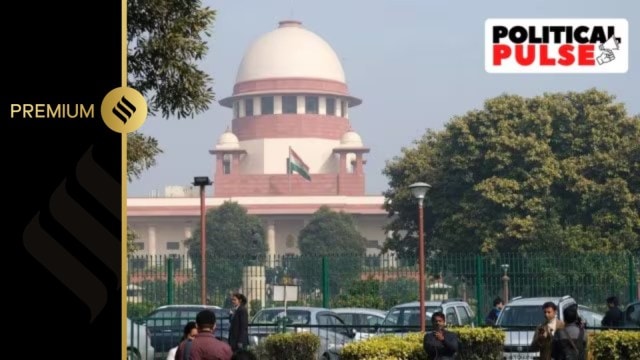The Supreme Court held Thursday that states are constitutionally empowered to make sub-classifications within Scheduled Castes (SCs) and Scheduled Tribes (STs), to help uplift castes that are more backward among them. However, politics responded to these fissures much earlier.

Karnataka has been trying to bring in sub-quotas among the SCs, and the last BJP government in the state announced the same ahead of the Assembly elections, despite it being certain that it would run into legal hurdles. On Thursday, welcoming the Supreme Court order, Tamil Nadu called it a vindication of the state’s Arunthathiyar (Special Reservation) Act of 2009, aimed at recognising and uplifting marginalised communities within SCs.
Political compulsions
In Punjab, the Zail Singh-led Congress government wanted to wean away Mazhabi Sikhs from the Akali Dal, which was trying to make them a committed vote bank as Sikhs. The sub-quota introduced in 1975 benefited both the Mazhabi Sikhs and the Balmikis (largely urban sanitation workers), who were lagging behind the leather-working caste in availing the benefit of reservations.
The Haryana quota introduced in 1994 reserved half the SC reservation for groups other than the leather-working caste, and came in the wake of demands to adopt the Punjab template. This was at a time when the Congress had just lost its committed Dalit vote bank in neighbouring Uttar Pradesh to the BSP.
In Andhra Pradesh, the more “advanced” Mala caste that had cornered most of the benefits of SC quota was with the Congress. The Naidu-led TDP through the 1997 sub-quota sought to reach out to the Madigas, who felt left out from reservation benefits, by creating four categories within the SCs.
Then came 2005, and on the petition of E V Chinnaiah, a Mala, the apex court barred sub-classification of SCs for the purposes of reservation.
Story continues below this ad
However, in Bihar, Nitish found a way around this by identifying almost all the Dalit groups apart from the Dusadhs as ‘Mahadalits’. Since the sub-quota was no longer an option, the Bihar CM and JD(U) chief unveiled housing, scholarship, education loans and school uniform programmes for the Mahadalits before the 2010 Assembly elections.
The BJP, which has managed to garner support among the Dalits, going beyond its upper caste base, has also been in favour of sub-classification. Representing the Narendra Modi government on the matter in the Supreme Court, Solicitor General of India Tushar Mehta said that states needed the freedom to sub-classify SCs for deepening and trickling down of the benefits of reservation.
Historical reasons
There were historical reasons and circumstances behind why some SC groups were able to benefit from reservations more than the others.
The leather-working caste of Punjab and west UP, for example, benefited from the high demand for boots in cantonments of the British Indian army and acquired disposable income, leading to education and a sharpened political consciousness. They were the main beneficiaries of quotas in these regions.
Story continues below this ad
The Mazhabi Sikhs of Punjab, in contrast, were agricultural labourers while Balmikis were urban sanitation workers – both tasks that did not require education, which failed to take off among these groups.
In Andhra Pradesh, the Malas were concentrated in coastal Andhra, which fell under the erstwhile Madras Presidency that started schools for the labouring classes, helping the Malas blossom. The Madigas, in contrast, were more thickly populated in the Telangana region, which was under the Nizam’s dominion and did not have commensurate opportunities.
Sociologists S S Jodhka and Avinash Kumar, in a paper on Dalit sub-classification in Punjab written for EPW in 2007, found that out of 105 IAS officers from SCs, only three belonged to the Balmiki and Mazhabi communities, though they accounted for 42% of the state’s SC population.
They also showed that from 1996 to 2003, when Haryana had sub-quotas, while 60 people from the “advanced” leather working caste became Class I officers, almost as many (50) from other Dalit castes also got such jobs. The more deprived castes’ representation in Class II jobs went up from 8% to 48%, and from 10% to 49% in Class III jobs.
Story continues below this ad
The Usha Mehra Commission constituted to look into the SC sub-quota question in Andhra Pradesh found in its 2008 report that the representation of the “advanced” Mala caste in the IAS and the IPS ranged from 76% to 86%, while only 13% to 23% of personnel in these services were from the Madiga caste. In comparison, the Malas constituted 41% of the state’s SC population against the Madigas’ 49%.

































